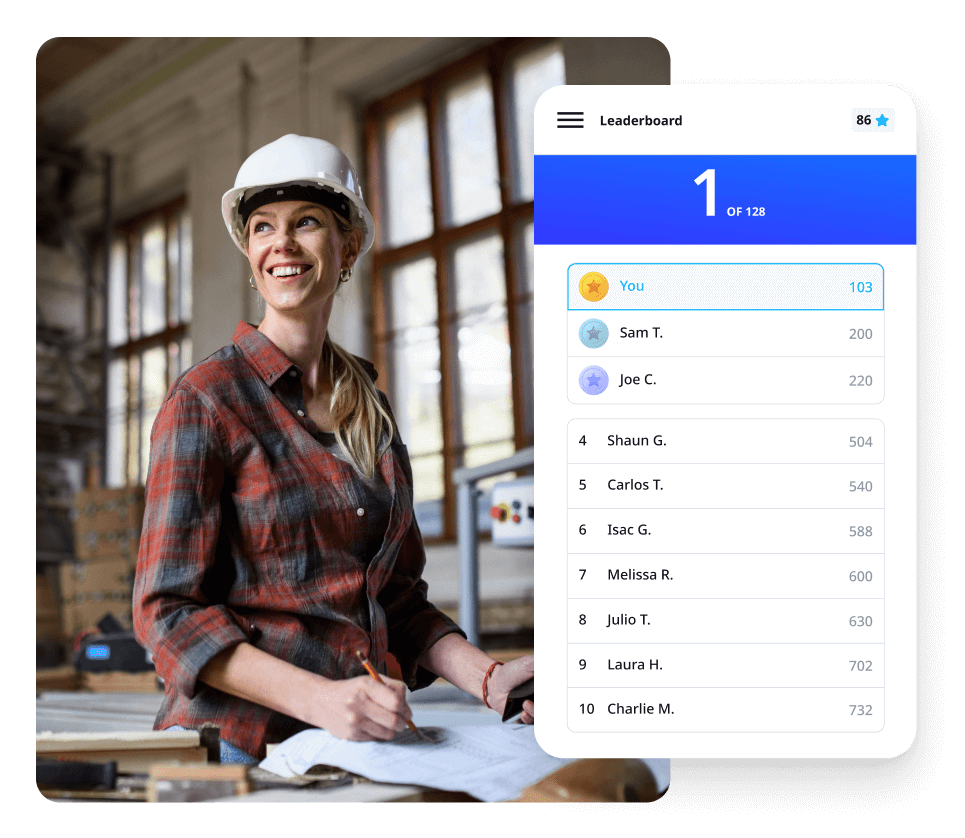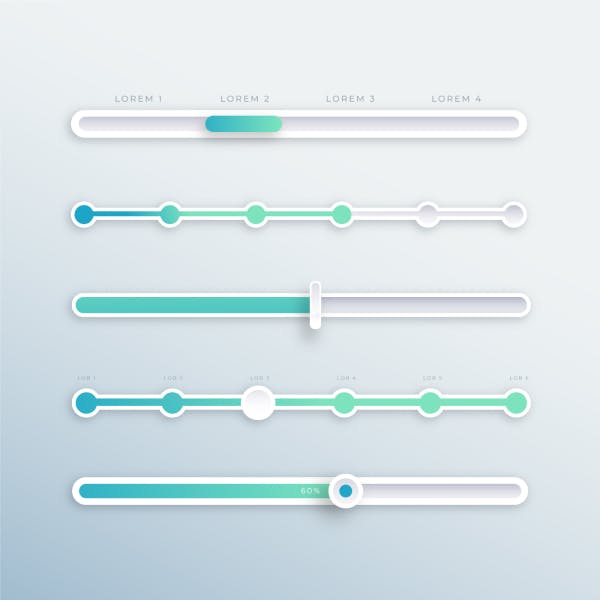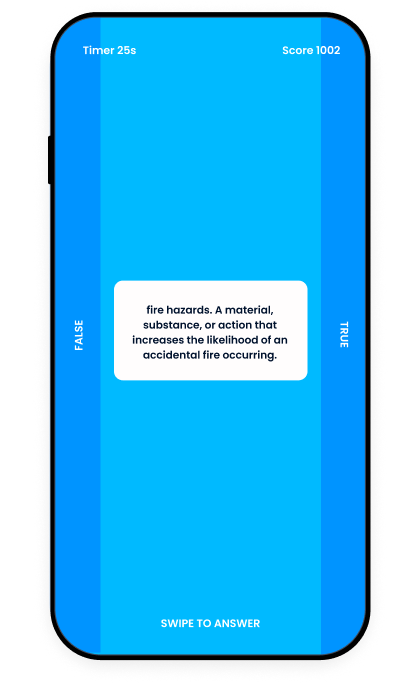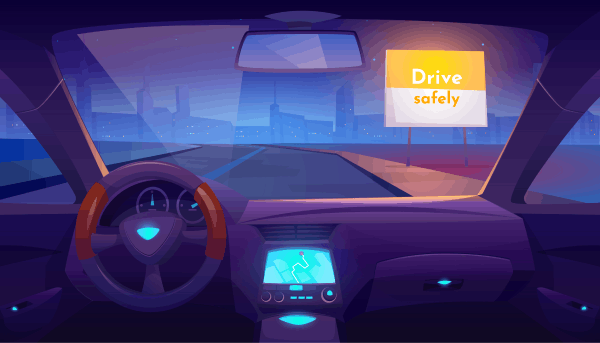10 Gamification Techniques

Gamification has transformed learning from a dull and boring experience to an active and enjoyable one. This is done by adding game elements and mechanics to enhance non-game contexts. In this article, we'll explore some gamification techniques that you can use to energize your team and increase engagement and motivation.
1. Points system
One of the most popular gamification methods is the use of a points system. It works by awarding points for certain actions or achievements, such as completing assignments and tasks or reaching milestones. By using these points, a learner can advance in levels or unlock rewards. For instance, if one earns enough points, they'll be able to access content that’s just available to them or unlock a new level of difficulty.

With EdApp, you can award learners with “stars” for getting questions right or logging in. Stars can be used in combination with their prizing system. But they can also be used by learners to get immediate gratification by collecting stars on their app. Learners can then "spend" their stars in one of four games on the star bar, which works as a virtual currency, to play for rewards. This company elearning strategy offers a clear and measurable way to track progress, incentivize engagement, and encourage competition.
Fed up with dull training? Add some excitement to your learning experience with EdApp today!
2. Badges
Another effective gamification technique is the use of badges. These can be earned by learners for completing specific tasks or mastering certain skills. Badges can be shared publicly and serve as proof of one’s achievements. With this gamification technique, learners can see their progress and feel accomplished, which may motivate them to keep participating and engaging with their learning.

With EdApp’s Achievements feature, you can personalize a wide range of accomplishments and rewards. It’s all up to you to determine the ingredients of each achievement and set up a “recipe” for success based on your intended learning process. If you’re unsure where to start, EdApp has a list of default achievements to serve as a guide before creating your own.
3. Leaderboards
Leaderboards can be a useful gamification technique where each learner can see how they compare to others and work their way up the scoreboard. This can encourage them to devote more time to the activity and exert greater effort to succeed in their objectives. Since learners compete with one another, leaderboards can also foster healthy competition and promote social engagement.

Motivate your team in a way that works for them. With EdApp, admins can create individual leaderboards where each learner competes against each other, or group leaderboards where each user group requires teamwork to win.
4. Rewards
Rewards have always been known as a great motivator. These can be given to learners who achieve goals, smash targets, or get high scores. While rewards can take many forms, offering real-world ones such as discounts, vouchers, and coupons can be more effective. By offering rewards, people can see tangible recognition for their efforts which can encourage them to work harder towards reaching their goals.

Want to get your hands on a great prizing system? Set your reward and let EdApp’s algorithm do the rest. Prizes are awarded automatically based on how many are available and how long the prize draw is running. So your teams are continually motivated when you need them to be.
5. Progress Bar
Progress bars can be a satisfying and useful gamification technique for inspiring and engaging learners. Progress bars let them see their progression in real time which can encourage them to keep going. It can also give a sense of success and pushes them to keep working towards their goal. Progress bars can also be combined with other gamification techniques to make them more effective, such as with badges and points.

6. Avatars
If you already have a gamification system in place, avatars are a great way to boost them. An avatar is a visual representation of a user online. Users can customize their looks by choosing outfits, skins, backgrounds, and more. This gamification technique creates a sense of identity and connection to the gamified system and creates a personalized experience. Additionally, they can view other people's avatars, engage in competition or collaboration with other avatars, form teams, and other social functions.
7. Quests
A quest is essentially a series of challenges or tasks that employees must complete to progress through the training. This can be used to make accomplishing tasks within a set amount of time more interesting and dynamic. When learners are able to complete a certain quest, this can give them a boost in morale and keep them engaged in finishing their goals. This gamification technique can also be used to reinforce concepts and review certain topics.

8. Gamified quizzes
While quizzes are a popular and common way to test for knowledge after training employees, not everyone likes answering them. Instead of traditional multiple-choice questions, you can gamify quizzes by presenting them as a puzzle game or including a narrative where the user is the main character in their own story. This will help to make the assessment more interactive and challenging for learners. If you’re still leaning into traditional quiz types, you can include mini-games in between to break the monotony of answering questions continuously.

9. Simulations
Use simulations if you want to create a realistic, immersive experience that lets employees practice skills and apply knowledge in a fun, but risk-free environment. Design a learning simulation in combination with other gamification techniques, such as challenges and quizzes to make it more effective. It’s also best to personalize them to match the learning needs of your employees.

10. Time pressure
Another gamification technique is to add a time pressure element. By adding one to certain tasks or activities, learners are given a sense of urgency and motivation to complete the task quickly. This can be especially useful when it comes to repetitive or tedious tasks. Additionally, time-limited challenges can be added to keep learners engaged and motivated.

Author
Gabrielle Rivera
Gabrielle is an eLearning content writer for EdApp, a microlearning solution designed for today's digital habits. She creates content about cutting-edge learning technologies and resources to help companies deliver great training experiences. When not absorbed in writing, she spends her time playing video games and reading books.
